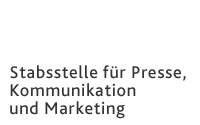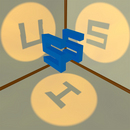Executive Department for
Press, Communication and Marketing
Adolf-Reichwein-Straße 2a Gebäude AVZ (Gebäudeteil AR-NA) 57068 Siegen
Phone: +49 (0)271/740-4915 Fax.: +49 (0)271/740-4911 E-Mail: presse@uni-siegen.de
Solution for marginal problem
Physicists from Siegen and Düsseldorf are developing a solution for the so-called marginal problem and publishing it in the renowned journal Nature Communications. The result could be part of standard teaching material in a few years.
In quantum physics, systems of elementary particles are described by wave functions. This wave function contains everything that can be known about the system. But is it possible to draw conclusions about the wave function of a large molecule from wave functions of individual atoms? This is the so-called marginal problem, which is of great importance for various applications, from chemistry to the construction of quantum computers. Physicists from the University of Siegen and the University of Düsseldorf have now developed a solution for this mathematical problem and published it in the journal Nature Communications.
The marginal problem can be illustrated in a simplified way with the question of whether the shadow can be used to infer the actual nature of an object. When you look at an object, e.g. a sculpture, in a room, it is very easy to determine what shadow it casts. On the one hand, you can simply observe the shadow by illuminating the sculpture from different sides, on the other hand, there are also mathematical methods to calculate a shadow. However, the reverse question, how to deduce the object from given shadow images, is not so simple. Does an object with a given shadow exist at all? And if so, what does it look like? This example illustrates a common problem in various sciences, namely the relationship between the parts and the whole: To what extent can the whole system be inferred from the description of subsystems?
The crucial idea in the solution now being developed is to consider several copies of the situation: If the problem is posed for four particles, one first considers a similar but structurally simpler problem for eight particles. If this still does not lead to a solution, one can go further and consider twelve, sixteen, or more particles. "It's like comparing several pictures on different pages in a book. If you have two or more copies of the book and put them next to each other, it's easier," says Dr Xiao-Dong Yu, who is the lead author of the new method. He has been a postdoctoral researcher in Prof. Otfried Gühne's research group at the University of Siegen since 2017.
Another advantage of the novel approach is that it reveals a fundamental connection between the marginal problem and the entanglement of particles. This connection enables deep insights into various applications of quantum information processing. One example is the construction of quantum codes that enable error correction in future quantum computers. That is why this method also convinced the reviewers of the journal. He was sure that the result would be part of standard teaching material in a few years, one of them wrote.
Next, the researchers would like to extend their method to other unsolved problems. Examples of further applications are the mathematical theory of graphs and the question of how far quantum mechanics goes beyond classical physics.
Contact
Prof. Otfried Guehne
Department of Physics
Tel.: 0271 740-3707
Email:
otfried.guehne@uni-siegen.de
Literature: Xiao-Dong Yu, Timo Simnacher, Nikolai Wyderka, H. Chau Nguyen and Otfried Gühne, A complete hierarchy for the pure state marginal problem in quantum mechanics Nature Communications 12, 1012 (2021)


